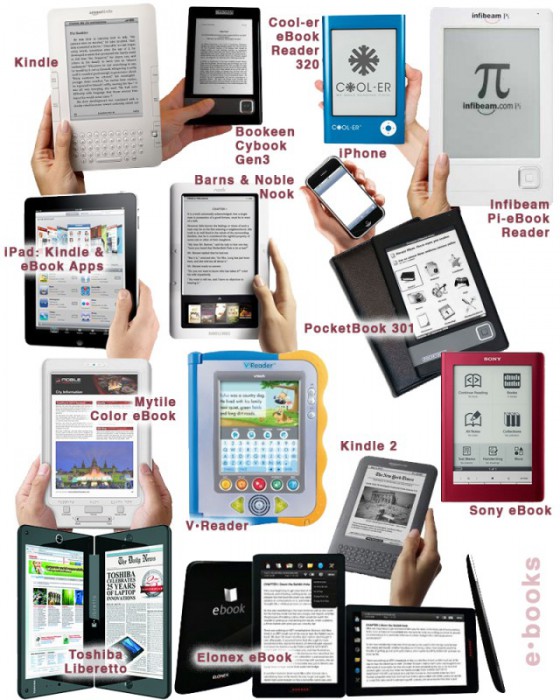I just came across a very interesting video by Annie Leonard. She’s been making little, approachable documentaries that explain difficult to understand issues—e-waste being one of those. Here’s her latest: The Story of Stuff. This is the story about how stuff gets designed, made, distributed, and then trashed. The Story of Bottled Water. This is the story about drinking water and the marketing of bottled water.
Tag Archive for product design
Contributor, Cultural Differences, Errors, Language, Personality, Scaffolding, Users
Language-learning expertise
by mabelev •
Landau, E. (2010). “From brain to language to accent.” CNN Online. Retrieved on October 4, 2010: http://pagingdrgupta.blogs.cnn.com/2010/09/23/from-brain-to-language-to-accent/?hpt=Sbin Becoming a proficient speaker of at least one language is a hallmark of the typical human psychological development. When it comes to learning more than one language, however, our abilities seem much more widely dispersed. Why might some people display a greater “talent” for learning a second language (or more) than others? By far the best known predictor of success at foreign language learning is the learner’s age. An increasing number of children who grow up in bilingual environments from early on may well grow up to be fluent speakers of both their native languages. But you don’t have to be natively bilingual in order to master multiple languages at the native-speaker level. In a classic study of second-language acquisition by Johnson & Newport (1989), immigrants to the USA were tested for high-level mastery of English (including phonetic and grammatical nuances), and the results were examined as a function of age at initial immersion in the English-speaking environment. People who started learning English before the age of 7 tended to achieve native-like proficiency. From there on, the older one was at arrival, the less native…
Cognitive Blindness, Conceptual Design, Contributor, Cultural Bias, Cultural Differences, Ethnographic & User Data, Interaction Design, Interface Design, Product Design Strategy, Users
Japanese Playing a New Video Game: Catch-Up
by Van Nga •
Tabuchi, H., “Japanese Playing a New Video Game: Catch-Up.” New York Times Online. Visited on October 4, 2010: http://www.nytimes.com/2010/09/20/technology/20game.html?_r=1 This article discuss how Japan is partnering with Westerns in the gaming industry. In the mid 1980s’ through 1990s most game franchises were developed from Japan. Some of Nintendo’s Mario, Pokemon, Sonic the Hedgehog from Sean and Gran Turismo from Sony. Japan is now at least five years behind in the industry. The best selling game was Call of Duty: Modern Warfare 2 which was developed in the United States. Concept Design: Japan use to define the gaming industry. Part of it’s problem is that they need to appeal to players that are located overseas. Interaction Design: Developers want to try and reach out to the West and collaborate. Collaboration in trying to make games have a more global appeal can possibly generate a bigger target audience. Capcom for example developed Take Shadow of Rome. This 2005 action game was made for European and American markets. Instead of designing over sized samurai swordsmen they designed over sized gladiators. Interface Design: The interface design are collaborating with people from overseas and learn their culture in order to appeal in the market. They…
Conceptual Design, Contributor, Cultural Differences, Interaction Design, Interface Design
Dating by blood type in Japan
by Roman Shumikhin •
Buerk, R. (2010). “Dating by blood type in Japan.” BBC News. Retrieved on 3 October, 2010: http://news.bbc.co.uk/2/hi/8646236.stm People in most parts of the world do not think about their blood group much, unless they have an operation or an accident and need a transfusion. But in Japan, whether someone is A, B, O or AB is a topic of everyday conversation. There is a widespread belief that blood type determines personality, with implications for life, work and love. Interest in blood type is widespread in Japan, particularly which combinations are best for romance. Women’s magazines run scores of articles on the subject, which has also inspired best-selling self-help books. There are employers who are discriminating against prospective candidates by asking about their blood type. A term for such behavior in Japan is burahara, which translates as blood group harassment. The preoccupation with blood ultimately dates back to theories of eugenics during the inter-war years. Stripped of its racial overtones, the idea emerged again in the 1970s. Now, blood typecasting is as common as horoscopes in the West, with the whiff of science—although dubious—giving it added credibility. Scientists regularly debunk the blood group theory but it retains its hold—some believe because,…
Contributor, Ethnographic & User Data, Flow
Just Me and My Pessimism in the ‘Race of Truth’
by Arun •
Kolata, G. (September 2010). “Just Me and My Pessimism in the ‘Race of Truth’.” New York Times Online. Retrieved on 6 November 2010: http://www.nytimes.com/2010/09/21/health/nutrition/21best.html In this article the author recounts her experiences about a bike race she participated with her husband. Through the race she explains the factors that motivates people to stay with a sport, and mental strategies that would help in racing. The author and her husband signed up for a bike race without knowing what they were up to. Although their motivation was not win, they wanted to check where they stand and how well they perform. At the race they were intimidated by other racers who were part of professional teams with professional gear and equipments. So the author and her husband became anxious and thought they performed very badly in the time trial race. But when the results were announced, they were happy although they were in the bottom heap. The researchers call this phenomenon defensive pessimism—where atheletes do a social comparison with their co-participants and imagine they would perform worse if they are intimidated. But they would feel happy if they perform slightly better than a few. Research has shown that atheletes with defensive…
Background Knowledge, Background Knowledge Errors, Contributor, Errors, Interaction Design, Interface Design, Mental Model Traps, Product Design Strategy, Scaffolding, Users
More is always better – Or so most think!
by Mallika •

Tugend, A., (2010). “For the Dishwasher’s Sake, Go Easy on the Detergent.” NY Times Online. Visited on November 04, 2010: http://www.nytimes.com/2010/03/13/your-money/13shortcuts.html If dishwashers do not seem to be doing their job or if your clothes are not coming out as soft as you’d like them to, or if these machines break down easily, it is most likely due to “user error.” We throw in multiple fabric softener sheets because more is better. More isn’t better in this case! The excess sheets liquefy when the dryer gets hot and gum up the dryer. Most people use ten to fifteen times the amount of soap they need. This excess soap is detrimental to the life of the machines. This article has some clear implications for interaction and interface design. User errors are likely to happen. Even if you have a manual with detailed instructions, the chances of somebody reading that manual are very slim. Even if they read it, they are still likely to err. How can design inculcate the right usage in the user? In this case, what can design do to prevent errors resulting from the ‘More is better’ p-prim? Possible Interaction Design Solutions: Solutions could be…
Cognitive Blindness, Conceptual Design, Cultural Bias, Ethnographic & User Data, Featured, Flow, Interaction Design, Interface Design, Mental Model Traps, Mirroring Errors, Pipsqueak Articles, Product Design Strategy, Scaffolding, Users
Thinking About the Future of Reading
by Olga Werby •

The Taxonomy of Usefulness We are a family with two Kindles, three iPads, two iPods, and an iPhone. We also have a few thousand old-fashioned paper books stored on bookshelves in every nook and cranny of our home: bedrooms, bathrooms, kitchen, stairs, garage, closets, family room, and any other space and surface that might hold a book or two or ten. We are into reading! And we use our Kindles, iPads/Pods/Phone, and computers to read as well. And while statistically speaking, we make just four data points for four family members, I feel we have something interesting to say about using technology to read. To help me understand my own relationship with reading and technology, I’ve come up with a little Taxonomy of Usefulness. If you’ve been reading this blog (or my books and papers), you’d have noticed that I like to slice up the world into groups sorted by a set of variables that I find useful at the time. Forming categories helps me think—the Cognitive Wheel is a prime example. Taxonomy of Usefulness These variables help derive the value of the electronic reading devices. Ergonomics There are many attributes to consider when describing the ergonomics of a device,…
